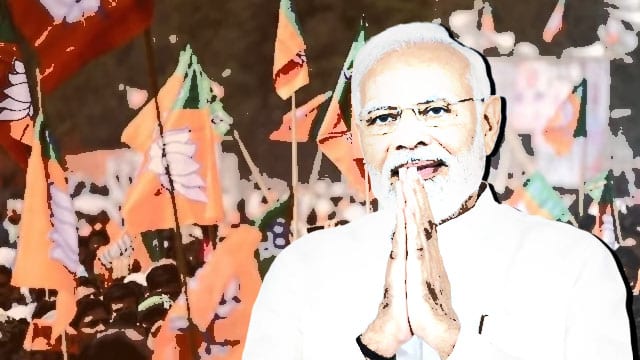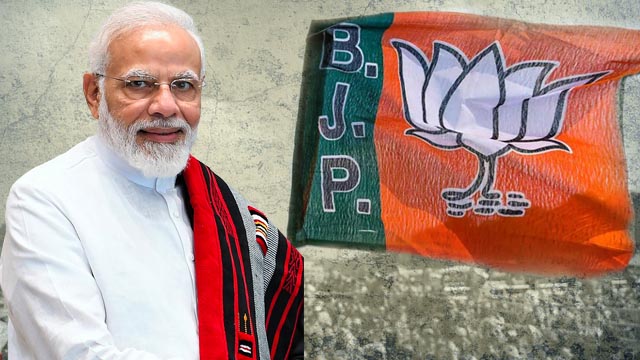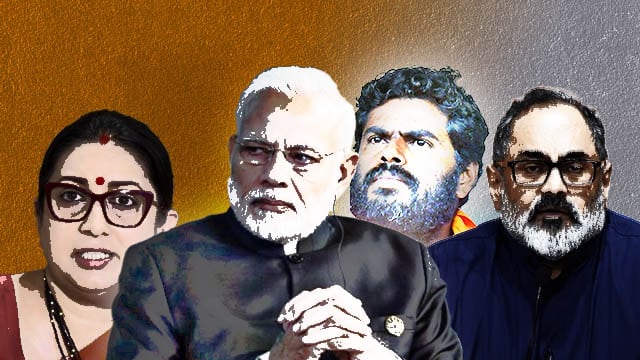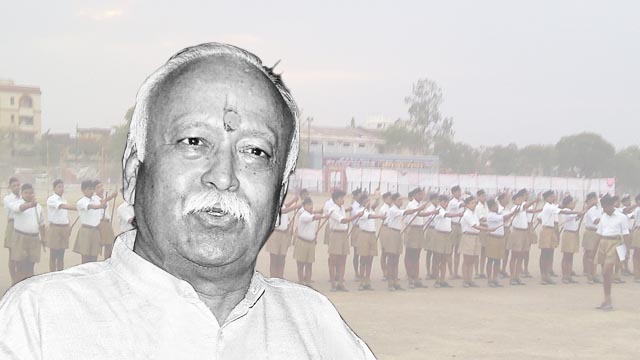Indian Prime Minister Narendra Modi’s Bharatiya Janata Party (BJP) has won in three out of five states where assembly elections were held in November and December. The BJP’s victory in the assembly elections has posed a serious challenge to the Opposition camp and its INDIA coalition.
Indian Prime Minister Narendra Modi appeared confident when he headed to the Parliament at the beginning of the ongoing winter session. The reason for his gleeful appearance was the recent victory of his federally ruling Bharatiya Janata Party (BJP) in three out of five Indian states, which went to provincial assembly polls in November. The BJP’s victory in the assembly elections is credited to what’s called “Modi’s guarantee”.
Motivated by the BJP’s victory in the assembly elections in Chhattisgarh, Madhya Pradesh and Rajasthan, Modi adorned the cloak of the motivator professor, asking the Opposition not to get driven by zeal and jealousy, but learn from their mistakes and do better next time.
How the BJP’s victory in the assembly elections helped Modi?
In the previous assembly elections to Chhattisgarh, Madhya Pradesh and Rajasthan, held at the fag-end of 2018 and at the end of Modi’s first tenure as the prime minister, the BJP lost to its arch-rival Indian National Congress (INC). The setback was then seen by many as an indicator of growing discontent against Modi’s policies.
However, the BJP overturned the equation by winning a landslide victory in the 2019 Lok Sabha elections—general elections in India— riding on high tides of jingoism. Later, the BJP also toppled the INC-led Madhya Pradesh government in 2020 by engineering a coup; a similar attempt was foiled in Rajasthan at the last moment by the INC.
This time, for the BJP it was a litmus test regarding Modi’s popularity in the Hindi-speaking ‘cow belt’ of India. Therefore, Modi projected himself as the face of the BJP in all these states. Rather than local leaders, the BJP won these three states riding on the much-hyped “Modi’s guarantee”–mixing communalism with populism.
The BJP couldn’t win the southern state of Telangana, where the INC defeated its regional rival, the incumbent Bharath Rashtra Samithi (BRS) of K Chandrashekar Rao, and Mizoram, where the Zoram People’s Movement (ZPM), one of its allies, won against another ally, the incumbent Mizo National Front (MNF).
While the BJP was not the principal contestant against the BRS or the MNF, and therefore, the INC and the ZPM had their leeway in toppling these parties in Telangana and Mizoram, the saffron camp focused on the three Hindi-speaking states, where it had a direct contest with the INC. Among these states, the INC was in power in Chhattisgarh and Rajasthan.
The BJP’s victory in the assembly elections in Chhattisgarh, Madhya Pradesh and Rajasthan helped Modi gauge the efficacy of INC leader Rahul Gandhi’s propaganda war against him. The BJP realised the voters were moved by Modi’s demagogy rather than Gandhi’s allegations of corruption, especially regarding the obnoxious links between the port-to-power conglomerate Adani Enterprises and the Modi government.
The BJP also realised that using the veneer of Islamophobia and jingoistic chest-thumping around India’s perceived gains under Modi’s leadership it could get away with the issues of rising unemployment in India, the widening wealth gap between India’s handful of few ultra-rich billionaires and its overwhelming population of poor, the falling price of rupee, the rising inflation and an ongoing agricultural crisis.
This realisation is important for the BJP as the Lok Sabha elections are only a few months away. Much before the BJP’s victory in the assembly elections, the Hindutva camp has chalked a plan to hype the communal polarisation of Indian voters before the Lok Sabha elections.
The polarisation of the majority of Hindus continues to play a rich dividend to the BJP, hence, it appears that the party will continue to pursue it to cover up the failures of the Modi government, especially in the economic sphere.
The BJP’s preparations for the upcoming Lok Sabha elections
In January, the BJP-led government in Uttar Pradesh will inaugurate the under-construction Ram Mandir—a temple of the Hindu deity Lord Rama—in Ayodhya, which is been built on the site of a demolished 15th-century mosque named Babri Masjid.
The mosque was demolished by a Hindutva-incensed mob led by the Rashtriya Swayamsevak Sangh (RSS)—the parental body of the BJP—in December 1992. The promised temple, which has been built following a Supreme Court ruling in favour of the Hindutva camp, is going to be projected as a symbol of Hindu pride against the apocryphal tale of “Islamic colonisation” peddled by the Hindutva camp.
Following the inauguration of the temple, the BJP and the RSS plan to send contingents of pilgrims from different parts of the Hindi-speaking ‘cow belt’ and beyond to Ayodhya and capitalise on the event. The Hindu votes in the Hindi-speaking regions of India have a significant political clout as they decide which of the parties will rule the country.
The disarrayed opposition
While the BJP has prepared the plot for the Lok Sabha elections, the INC remains disarrayed, especially after its ego suffered a jolt due to the BJP’s victory in the assembly elections in the three states. It can neither oppose Hindutva, fearing the loss of Hindu votes, and it can’t support it fearing the loss of traditional secular and minority votes.
Several opposition parties formed the Indian National Developmental Inclusive Alliance (INDIA) to contest against the BJP in a one-to-one arrangement throughout the country. The INC deferred the crucial seat-sharing arrangements and other meetings of the INDIA coalition for the assembly elections. It wanted to gain an upper hand in the INDIA coalition by winning the elections in four out of five states.
However, now, after suffering an ignominious defeat, the INC has been showing interest in the INDIA coalition. Still, the coalition will take much time to fix a seat-sharing formula that will be accepted by all. In that case, it will also lose the crucial time needed for preparing a narrative and a suitable strategy to defeat the BJP.
Now, the disarrayed and disunited Opposition is no match to Modi’s juggernaut, which is pulverising all barricades set up by its opponents. Whether the BJP’s victory in the assembly elections will also continue in the Lok Sabha elections, or whether the INC and the INDIA coalition can defeat the BJP depends on the narratives used by both sides and the durability of their respective strategy.
Lessons of 2019
The debacle of the Opposition in the 2019 Lok Sabha elections taught two important lessons.
Firstly, without a credible leader’s face, the Opposition can’t contest against the BJP, which will exploit the ubiquitous influence of Modi. Without a leader, who will be the declared contestant for the prime minister’s seat, the INDIA coalition will be a headless chicken.
Secondly, the Opposition can’t survive based on negative narratives. Rather than negating the BJP’s narratives and relying on a cancel culture, the Opposition needs a positive campaign that will set new agendas and narratives and force the BJP to play in its playground rather than the opposite.
Can the Opposition do it?
The BJP’s victory in the assembly elections in Chhattisgarh, Madhya Pradesh and Rajasthan can’t be indicators of the 2024 Lok Sabha elections. Last time, the BJP lost in these elections but won a landslide victory in the Lok Sabha elections.
Moreover, the difference in the percentage of votes between the BJP and the INC isn’t much, and it shows that if the Opposition uses a correct strategy and builds its campaign around a fresh narrative, it can make a difference in several Lok Sabha seats.
However, whether the INC or other INDIA coalition members are in the mood to do so is a big question. Although most of the INDIA coalition members have been pressing the INC to initiate a meeting, it’s more about seat sharing than preparing a strategy and a narrative around it.
With such a lacklustre attitude a big question mark hangs over whether the Opposition is in a mood to build a sustainable campaign to oust Modi in the 2024 elections or whether it’s merely interested in increasing their respective seats in the Parliament to have better bargaining powers. In a few months, it will be clear whether the INDIA coalition is serious about what it claims it wants.




